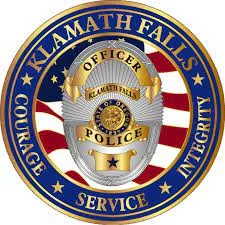PORTLAND, Ore. – The Opioid Settlement Prevention, Treatment & Recovery Board (Settlement Board) has approved a proposal to direct $13.7 million toward increasing and strengthening the state’s substance use prevention workforce.
On May 8, the Board approved an Alcohol and Drug Policy Commission (ADPC) proposal to build Oregon’s workforce capacity for primary substance use disorder prevention by providing:
- $9.5 million to counties to strengthen local prevention workforce and evidence-based prevention programming.
- Nearly $3.8 million to culturally and linguistically specific community-based organizations and regional health equity coalitions to increase the number of primary prevention initiatives in communities experiencing disproportionate impacts of substance use and overdose.
- $450,000 to the Oregon Coalition for Prevention Professionals to train and certify up to 100 new certified prevention specialists.
The funding will be sent to Oregon health Authority (OHA), which will administer the allocations. The Board’s decision can be viewed in a recording of its May 8 meeting here.
Settlement Board Co-Chair Annaliese Dolph said, “The Settlement Board is setting an example for the state with this support of upstream prevention. We cannot treat our way out of the substance use disorder crisis. We must also prevent substance use disorders from occurring in the first place.”
Prior to awarding any funding, OHA must engage the partners listed in the ADPC proposal and provide a proposed funding formula and implementation plan to the Board for approval no later than Sept. 4, 2024. OHA is developing a partner engagement plan to begin this work.
Since July 2021, the State of Oregon has reached agreement on national lawsuits against several companies for their roles in the opioid crisis. Through these agreements, nearly $600 million will be awarded to Oregon over the course of 18 years. Settlement funds from opioid manufacturers, distributors and pharmacies are divided between the State of Oregon (45%) and local jurisdictions (55%).
The state’s share is deposited into the Opioid Settlement, Prevention, Treatment and Recovery (OSPTR) Fund as it becomes available. This fund is controlled by the 18-member OSPTR Board.
Local jurisdictions receiving settlement funds (those with populations greater than 10,000) decide how to use their funds. Cities and counties must report to the Oregon Department of Justice (DOJ) annually on how they have allocated their funds. The annual OHA-DOJ expenditure report for fiscal year 2022-2023 will be posted to OHA’s website soon. The report for the current fiscal year will be published no later than Dec. 21, 2024.
OHA contracted with Comagine Health to convene a monthly Opioid Settlement Learning Collaborative for local jurisdictions to discuss allowable uses of settlement funds and best practices, including prevention best practices from other local jurisdictions.
OSPTR Board allocations to date
Through the current fiscal biennium that ends in June 2025, about $89 million will be deposited into the OSPTR Fund. To date, the OSPTR Board has decided on the following allocations:
- $26.7 million to the nine Federally Recognized Tribes in Oregon – this is equivalent to 30% of all funds anticipated this biennium. This 30% set-aside will continue for the life of the fund as additional settlement payments are deposited.
- $13 million to the Save Lives Oregon Harm Reduction Clearinghouse to distribute naloxone and other life-saving supplies to qualified entities.
- $4 million to develop a unified and evidence-based state system for collecting, analyzing and publishing data about the availability and efficacy of substance use prevention, treatment and recovery services in Oregon as required by ORS Chapter 63, Section 6.
To learn more about Oregon’s opioid settlement funds, visit oregon.gov/opioidsettlement.





